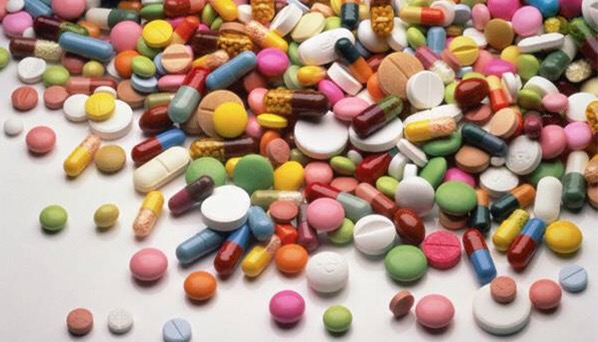When penicillin’s antibacterial properties were discovered by Alexander Fleming in the 1920s, the face of medical technology and treatment changed forever. Bacterial infections that had once perplexed doctors would be easily curable in the form of mass-produced antibiotics (like penicillin) by the 1940s.
There’s no question that antibiotics set the stage for virtually all of modern medicine. But what had once been a cure-all for all sorts of bacterial infections has now become somewhat of a broad and unfortunate predicament for health officials the world over.
Widespread use of antibiotics has created a phenomenon called antibiotic immunity (or antibiotic resistance) in which certain strains of bacteria have become immune to the effects of antibiotics.
For those of us who have yet to be afflicted with antibiotic-resistant bacteria, this may not seem like a big deal. The U.S. Centers for Disease Control and Prevention (CDC), however, says that 23,000 people in the United States die from drug-resistant bacterial infections each year. Another study suggests that around 700,000 people die worldwide from antibiotic-resistant infections annually.
That number is predicted to grow to 10 million by 2050 if new measures aren’t taken to combat antibiotic resistance. For comparison, the number of deaths in the widely-publicized Ebola epidemic in 2014 reached only 11,000.
How Did This Happen?
Part of the problem behind antibiotic immunity is the overconsumption of antibiotics. When the drugs became widely available, doctors began prescribing them for all sorts of ailments, including viruses which antibiotics cannot treat. This practice persists into the present day with one study showing that upwards of 30% of all antibiotic prescriptions written in the United States are unnecessary.
Of course, doctors aren’t always to blame. The difference between viral and bacterial infections isn’t readily noticeable. For instance, symptoms like coughing, runny nose, sore throat, and headache are all classic signs of a viral infection, but there could also be an underlying bacterial cause for these symptoms.
As a safety measure, most doctors will prescribe antibiotics even if there’s a chance they won’t help.
In some Third World countries, the problem is more varied. Antibiotics there are often sold over-the-counter, meaning that anyone can purchase them at any time without a doctor’s prescription.
In many cases, these drugs won’t help an ailment, but, for most people in these locales, a trip to the doctor is unfeasible. But why is over-prescription and overconsumption even a problem in the first place?
Survival of the Fittest
At the microscopic level, bacteria have started to adapt to the power of antibiotics. Bacterial microbes can share genes amongst themselves, allowing for entire “packages” of drug-resistant DNA to be passed around in a single colony. In addition, random mutations in bacterial offspring can produce even more DNA that is immune to antibiotics.
Overusing antibiotics only makes it more likely that this gene sharing will continue. This is why hospitals are often safe havens for the most drug-resistant bacteria because they tend to have the largest and most concentrated gene pool to draw from. Only the most resistant bacteria can survive in a hospital, but, with gene sharing, immunity can essentially be manufactured.
Because antibiotic overconsumption is such a problem, human beings become breeding grounds for what are known as “superbugs” or “gram-negative” pathogens—bacteria that are resistant to all sorts of antibiotics and can pass that resistance on to other pathogens.
Immunity has caused us to create many different types of antibiotics. If one doesn’t work, we move on to the next. Sometimes, there are dangerous side effects. For example, antibiotics such as Levaquin, Cipro and Avelox face class action drug lawsuits for side effects.
Advertisement
In the United States, there are only 26 antibiotics that are allowed to be commercially sold to patients, and no new antibiotics have been put on the market since 1987. That’s given these superbugs 30 years to adapt to all the medications we can throw at them.
Which Bacteria Are Immune?
While you wouldn’t think all bacteria are immune to every antibiotic, the rate at which antibiotic immunity is growing is cause for concern. In the United States, around 40% of Streptococcus pneumoniae strains, a class of bacteria known to cause pneumonia and meningitis, is resistant to penicillin.
It is also coming quicker than anticipated. In 2017, woman died from a superbug that was found to be resistant to 26 different antibiotics.
One study in the Journal of the Pediatric Infectious Diseases Society showed that infections of Enterobacteriaceae—a bacterial family containing strains like Shigella, salmonella, and E. coli—were increasingly becoming resistant to multiple drugs in children with extended hospital stays.
Strains of bacteria that cause tuberculosis, gonorrhea, and urinary tract infections are also becoming increasingly resistant. In February 2017, the World Health Organization released a list of 12 priority bacterial pathogens with the most critical being:
- Acinetobacter baumannii – responsible for a variety of hospital-acquired infections
- Pseudomonas aeruginosa – another hospital-acquired bacterium, often causing pneumonia and sepsis
- Enterobacteriaceae – a family of bacteria known for causing gastrointestinal infections, urinary tract infections, and others
What Can Be Done?
As of this moment, there are several large and small steps being taken to combat antibiotic immunity. The World Health Organization is calling on pharmaceutical companies to begin more aggressively pursuing the discovery of new antibiotics. There are currently 40 new potential antibiotics in clinical trials in the United States, but over half them will likely turn out to be non-viable and fewer than that will ever end up on the market.
Another method for reducing the proliferation of superbugs is actually testing a bacterial strain’s immunity to a particular drug prior to administering that drug. For instance, doctors and scientists have begun testing for rifampicin resistance in strains of bacteria that cause tuberculosis.
At an individual level, we can all try to avoid taking antibiotics unless you’re certain you need them. It’s also important to finish all of your pills to ensure that stray pathogens don’t stick around.








